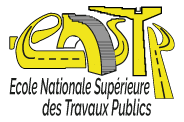First, we can mention propulsion technologies, including high-efficiency diesel engines, electric and hybrid propellers, wind propulsion systems like sails and kites, as well as hydrogen fuel cells. In terms of navigation and control systems, we find GPS and satellite navigation systems, radars and sonars for collision avoidance, automation of maneuvers and piloting, as well as fleet tracking and management systems. To reduce emissions, there are ballast water treatment systems, scrubbers for smoke treatment, the use of alternative fuels like LNG or biofuels, and optimization of hull and propulsion design. Regarding logistical and digital innovations, we find port information and management systems, interconnection of supply chains, simulation and modeling of transport flows, as well as tracking and traceability solutions for goods. Finally, regarding smart port infrastructures, we can mention automated docks and terminals, optimization of handling and storage, the use of renewable energies and intelligent energy management, as well as monitoring and environmental management systems.
Intelligent Transport Systems (ITS) represent a major advancement in transport and mobility management. They rely on the use of information and communication technologies to enhance the efficiency, safety, and sustainability of transport systems. First, ITS include traffic and circulation management systems, such as traffic detection and monitoring systems, user information and guidance systems, and traffic regulation and control systems. Next, ITS integrate information and communication systems, including real-time multimodal information systems, mobile applications, and smart mobility services, as well as communication networks dedicated to transport. Additionally, ITS feature safety and driver assistance systems, such as driving assistance and alert systems, cooperative systems between vehicles and infrastructure, as well as safety and incident management systems. Finally, ITS incorporate flow and intermodality management systems, such as ticketing and electronic payment systems, logistics and freight management systems, and systems to optimize connections and intermodality. Successful implementation of ITS requires an integrated approach, involving authorities, transport operators, technology companies, and users. It must also be accompanied by an appropriate regulatory framework and significant investments in infrastructure and technologies.
Firstly, the identification of public-private partnership (PPP) projects involves a thorough analysis of the needs and priorities of the public sector, an inventory of existing assets and infrastructures, an assessment of the potential for private sector involvement, and the identification of sectors and areas most conducive to this type of arrangement. Next, the selection of PPP projects relies on defining relevant selection criteria such as technical feasibility, economic viability, or social impact. An in-depth evaluation of the viability and added value of projects, along with a comparison to traditional delivery methods, helps select the most relevant projects. Finally, the structuring of PPP projects involves defining the most suitable legal and financial framework, optimally allocating risks between public and private parties, determining remuneration and profit-sharing arrangements, establishing contractual provisions, and implementing governance and monitoring mechanisms for the partnership. Throughout this process, the involvement of all stakeholders is essential to ensure the project's acceptability and viability. A rigorous identification and selection, as well as appropriate structuring of the PPP, are guarantees of success for this type of innovative partnership between the public and private sectors.
First of all, legal aspects are paramount in public-private partnership (PPP) contracts. This involves considering the applicable regulatory and legislative framework, legally structuring the contract with clauses, responsibilities, and rights and obligations of each party, managing asset ownership and management aspects, as well as the fiscal and accounting regime. Dispute resolution mechanisms, such as arbitration or mediation, must also be defined. Regarding negotiation strategies, it is essential to identify key issues for each stakeholder, analyze the power dynamics and financial balance of the project, and define negotiation priorities such as risk allocation, remuneration, or control. Negotiation techniques, such as concessions, compromises, or alternative options, must also be mastered to effectively manage potential conflicts of interest. Finally, monitoring the implementation of the PPP contract requires the establishment of governance and management mechanisms, performance indicators, and control of contractual commitments. Audit, evaluation, and management procedures for contract modifications and renewals must also be carefully defined. A comprehensive and rigorous approach to these legal, negotiation, and monitoring aspects is essential to ensure the success of a PPP project, maximizing benefits for stakeholders while managing risks.
First of all, identifying the problem or research question is a crucial step. It involves clearly defining the research objective and delineating the scope of study, while formulating working hypotheses. Next, the literature review allows for a thorough bibliographic search to analyze and synthesize existing knowledge on the subject. The design of the methodology involves selecting the most appropriate data collection methods and techniques, as well as defining the variables to be measured and how to quantify them. During data collection, it is important to implement experimentation or observation protocols in a rigorous and systematic manner. The analysis and interpretation of results involve processing and statistically analyzing the collected data, and then interpreting them in relation to the working hypotheses. Communicating the results involves writing a detailed research report and presenting the results in scientific publications. Finally, critical evaluation and perspectives allow for discussing the limitations of the study, any potential biases, and identifying new research avenues and potential applications. This methodology allows for conducting a rigorous, reproducible, and scientifically validated research approach, with the aim of producing new knowledge, testing hypotheses, and contributing to the advancement of knowledge in a given field.
The collection and processing of transport data are essential for improving mobility systems. They come from various sources (sensors, operators, users, Open Data) and require secure and interoperable infrastructures. Their analysis allows for service optimization, real-time user information, and facilitates infrastructure management. However, the use of this data raises issues of governance and ethics, particularly concerning data protection and stakeholder involvement.
